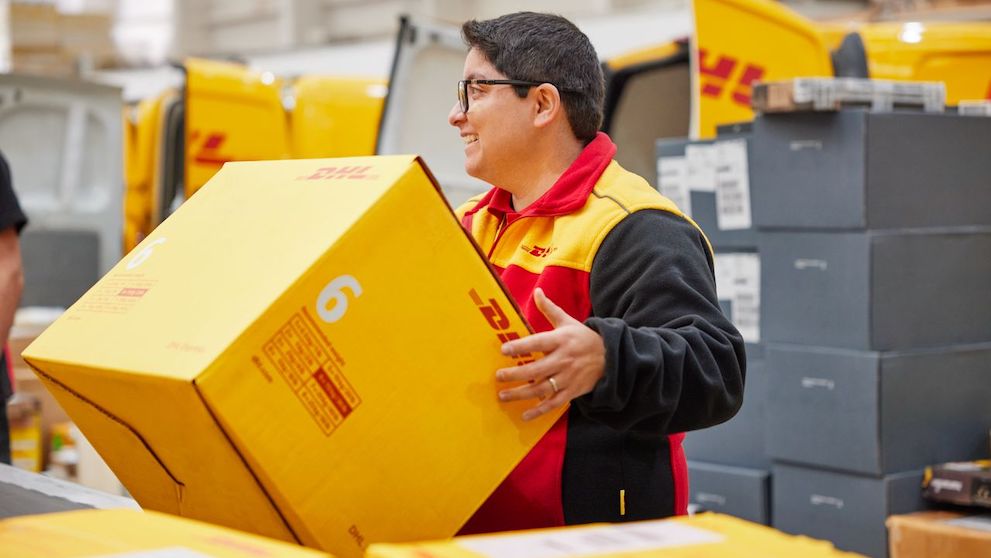Looking to grow your business internationally? Then look no further than China, home of the world’s largest e-commerce market and a customer base with an appetite for foreign brands. As international trade experts, we’ve collated the key things you should know to help your business tap into this lucrative opportunity. Read on for our exclusive guide to doing business in China – from how to navigate customs seamlessly, to the shopping trends you should follow to attract customers.
Export to China: market overview
It’s no secret that China is a thriving hotspot of global trade. Data from the DHL Trade Growth Atlas found that between 2016 and 2021, the country generated a staggering one-quarter of global trade growth. Whilst the West has long thought of China as the world’s manufacturing capital, it provides plenty of import opportunities for international brands, too.
The penetration rate of online shopping in China has grown rapidly over the last ten years, from 42.9% in 2002 to 79.2% in 20221, making it one of the key emerging markets for cross-border businesses to target. But what are consumers there buying? And from which countries?
China’s imports
Which countries do Chinese e-commerce users buy from the most?
Distribution of goods purchased by cross-border import e-commerce users in China as of January 2021, by region of origin:
Source: Statista2
For these countries, China is a huge cross-border e-commerce opportunity.
Exporting to China: understanding the Chinese market
To successfully sell to a new international market, you need to understand local buyers’ behaviors and preferences. These insights can inform your sales and marketing strategies.
What do Chinese online shoppers buy from cross-border brands?
Cross-border e-commerce retail imports by product (as share of total transaction value), 2021:
Source: Ministry of Commerce of the People's Republic of China3
Mobile commerce
China is a mobile-first country, driven by the government’s prioritization of the development of 5G wireless technology. 64% of all e-commerce transactions in China are completed on a mobile device4, predominantly ‘super-apps’ (see below) where users can socialize, shop, and pay for products on a single platform. International brands wishing to attract these mobile buyers will need to invest heavily in a Chinese language smartphone app.
Online marketplaces
Chinese consumers like shopping at online marketplaces as they allow them to browse and compare several products at once. The leading marketplaces in China are Alibaba, Taobao, Tmall and JD.com. Selling on these platforms is tricky for cross-border brands, as sellers have to be registered in mainland China to qualify. But, there is a way in – Tmall has a dedicated sister site, Tmall Global, specifically set up for foreign brands; you don’t need a physical entity in China or a Chinese business license to sell on the platform, and you can accept payment in your local currency. Discover the full pros and cons, here.
Customer service
“Guanxi” is a Chinese concept which describes how personal and business relationships are built on trust. It filters down to Chinese consumers’ expectations of exceptional customer service – with personalization, fast and reliable shipping, and a stress-free shopping experience cited as the top priorities. As customer reviews play an important part in Chinese buyers’ decision-making, underperforming on customer experience risks your business being named and shamed online.
Value and quality
Price is an important factor to Chinese consumers – they shop around for deals, coupons and discounts. Cross-border brands often struggle to compete with domestic brands’ pricing and product choice.
Yet, they can win over Chinese buyers through product quality. The Chinese counterfeit market has created distrust amongst many shoppers there, who instead look overseas for better quality. Position yourself as a trusted brand with authentic products, and consumers will respond well.
Social commerce
Social media and e-commerce go hand in hand in China. Popular video platform Douyin (the country’s version of TikTok) allows users to buy products they see streaming on the app simply by tapping the video. Unfortunately, it is hard for foreign businesses to set up a Douyin account unless they have a base in mainland China.
An easier route to the Chinese market is through WeChat, the country’s most popular messaging app – with a whopping 1.24 billion monthly active users5a who spend an average of 2 hours per day on it5b. With WeChat for Business, you can set up an e-commerce storefront on the WeChat platform to sell directly to Chinese consumers. The app has an in-built payment service, WeChat Pay, making facilitating payments seamlessly for your business and your customers.
Live streaming
China is the world’s livestreaming capital, where the feature has been a mainstream part of e-commerce for years. There are countless livestream platforms where “KOLs” – key opinion leaders, the Chinese equivalents of influencers – show and demonstrate a product, and interact live with viewers who ask questions. The personal touch of this engagement makes promotional activities more convincing and boosts sales. If you want to tap into the Chinese market, you should seriously consider marketing through livestreaming.
Shopping holidays
Much like the West’s Amazon Prime Day, China has several of its own major shopping festivals when record numbers of consumers head online in search of bargains. Two of the most popular are Singles’ Day (11 November), and the 618 festival (June 18th). Do your research and plan your marketing strategy weeks in advance to cash in on every opportunity.
Major shopping dates for your calendar
Digital wallets
Unsurprisingly in a mobile-first market, digital wallets are the leading payment method for Chinese consumers – with Alipay and WeChat Pay taking the biggest market share of transactions6. Online shoppers are 70% more likely to finalize a purchase if their preferred payment method is displayed as an option at checkout7, so always do your research into local buyers’ preferences!
Challenges of exporting to China
Selling to China does not come without challenges. But don't worry, DHL's expert on China exports and shipping has provided you with the key strategies to overcome them, so read the below which will help you create actionable plans to export to China.
1. Navigating customs & import clearance
Shipping your products into China can be a complex and time-consuming operation:
- The country has strict customs procedures – even more so since Covid – which require shippers to provide detailed documentation and comply with specific regulations. Any incorrect or missing paperwork can cause shipments to be held up.
- Certain products, including food, electronics and medical devices will have extra regulations to comply with to avoid delays, fines, or even seizure of the shipment.
The solution
It is important for businesses to work with a logistics provider that has experience and expertise with customs processes so that their shipments are cleared quickly and efficiently. By partnering with international logistics leader DHL, businesses will receive support navigating China’s customs regulations. This includes guidance on how to complete the process of customs clearance, so that shipments aren’t delayed. For DHL account holders, this is offered as a dedicated service.
2. The cost of shipping to China
China imposes import taxes and duties on many products. This, added to the cost of shipping and customs fees, will quickly add up for your business – and make it difficult for you to compete on price with domestic sellers.
The solution
- DHL offers competitive shipping rates – with its estimated cost calculator, you can gain a quote quickly. You can then factor this cost into your pricing strategy and how you charge your customers for shipping.
- DHL’s Duties & Taxes Paid (DTP) service charges import duties, taxes and other shipping fees back to your business, rather than your customers. It’s more convenient for your customers, ensuring a seamless experience that boosts customer satisfaction and loyalty.
3. Setting up a Chinese-facing website
Unfortunately, selling to Chinese consumers as a cross-border brand involves more than just changing the language of your website. To show up on Chinese search engines’ result pages, you need a site hosted in China. This involves several complex steps, including registering with the Chinese Ministry of Industry and Information Technology, and obtaining relevant commercial licenses – all of which can take several months.
The solution: sell via an online marketplace
As previously mentioned, some of China’s leading marketplaces have dedicated “sister” sites for international brands to sell on – without the need for a legal entity or bank account in the country. These include Tmall Global and JD Worldwide. Take your time researching your options, factoring in fees, the type of products you sell (e.g. some platforms are more suited for luxury goods), and how long you may have to wait for approval.
4. Fast shipping
Chinese consumers expect fast delivery – even from overseas brands. The sheer size and scale of the country – plus poor infrastructure in rural areas – makes this a big task for cross-border businesses.
The solution: partner with DHL
DHL has a vast global network which means it can help your business reach customers in China quickly. DHL Express will deliver your shipment to China with full tracking so that you – and your customers – can check the delivery status of the shipment in real-time. Peace of mind for you, excellent service for your customers.
Market entry strategy: Steps to export to China
Preparing to export to China
1. Conduct market research
China is a vast country of over 1.4 billion consumers – but not all of them are prospects. You should have a clear idea of the demographic of your target audience – including age, budget, which online marketplaces they buy from the most, which social media platforms they engage with, their preferred payment method(s) etc. These insights will help you personalize your marketing segmentation strategy.
2. Localize your brand
Choosing a Chinese name for your business will help you appeal to consumers there. And of course, it’s important that your product listings/social media content/customer service are in the local language, too. Just be sure to use Chinese experts for this though – relying on online translators risks misinterpretations. Finally, ensure your business accepts payment in the local currency.
3. Select a suitable entry strategy
For many international small businesses and e-commerce startups, selling on a Chinese marketplace is the best entry strategy. You will benefit from these platforms’ vast customer base, local knowledge, and existing fulfilment services. Of course, there are some fees involved, but the time you save in dealing with administration will more than make up for it.
4. Know your Unique Selling Point
It may be tempting to go all in and adapt your products for Chinese buyers. But remember, many Chinese customers – particularly those of luxury goods – buy from foreign brands specifically because they offer something different. Knowing why customers want your products – whether it’s the quality or price, for example – will help you market them effectively. This is most probably something you will learn over time, using analytics data and customer feedback.
5. Plan logistics and shipping
For this, there really is no better route than partnering with an international logistics leader. With a presence in over 220 countries and territories, no carrier understands international shipping like DHL – and can help your business grow in China with ease.
Feeling inspired and ready to sell to China? First stop – open a DHL Express Business Account for expert international shipping advice and competitive rates.
3 – Mitsui & Co., November 2021
5a & 5b – Shopify, December 2022
































